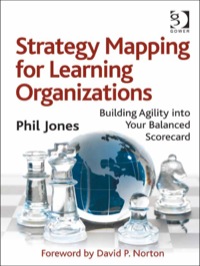Question
1. You have an opportunity to make an investment that will pay $400 at the end of the first year, $100 at the end of
1. You have an opportunity to make an investment that will pay $400 at the end of the first year, $100 at the end of the second year, $200 at the end of the third year, $300 at the end of the fourth year, and $500 at the end of the fifth year. a.Find the present value if the interest rate is 13 percent. (Hint: You can simply bring each cash flow back to the present and then add them up. Another way to work this problem is to either use the =NPV function in Excel or to use your CF key on a financial calculatorbut you'll want to check your calculator's manual before you use this key. Keep in mind that with the =NPV function in Excel, there is no initial outlay. That is, all this function does is bring all the future cash flows back to the present. With a financial calculator, you should keep in mind that CF0 is the initial outlay or cash flow at time 0, and, because there is no cash flow at time 0, CF0=0.) b.What would happen to the present value of this stream of cash flows if the interest rate were zero percent?
a.What is the present value of the investment if the interest rate is 13 percent? $enter your response here(Round to the nearest cent.) Part 2 b.What is the present value of the investment if the interest rate is zero percent? $enter your response here(Round to the nearest dollar.)
2. How much do you have to deposit today so that beginning 11 years from now you can withdraw $13,000 a year for the next 5 years (periods 11 through 15) plus an additional amount of $26,000 in the last year (period 15)? Assume an interest rate of 11 percent. The amount of money you have to deposit today is $enter your response here. (Round to the nearest cent.)
3. You would like to have $51,000 in 15 years. To accumulate this amount, you plan to deposit an equal sum in the bank each year that will earn 9 percent interest compounded annually. Your first payment will be made at the end of the year. a.How much must you deposit annually to accumulate this amount? b.If you decide to make a large lump-sum deposit today instead of the annual deposits, how large should this lump-sum deposit be? (Assume you can earn 9 percent on this deposit.) c.At the end of five years, you will receive $20,000 and deposit this in the bank toward your goal of $51,000 at the end of year 15. In addition to the lump-sum deposit, how much must you deposit in equal annual amounts, beginning in year 1 to reach your goal? (Again, assume you can earn 9 percent on your deposits.) Question content area bottom Part 1 a.How much must you deposit annually to accumulate this amount? $enter your response here(Round to the nearest cent.) Part 2 b.If you decide to make a large lump-sum deposit today instead of the annual deposits, how large should the lump-sum deposit be? $enter your response here(Round to the nearest cent.) Part 3 c.If you deposit $20,000 received at the end of five years in the bank, what will the amount grow to by the end of year 15? $enter your response here(Round to the nearest cent.) Part 4 In addition to the lump-sum deposit, how much must you deposit in equal annual amounts, beginning in year 1 to reach your goal? $enter your response here(Round to the nearest cent.)
4. Springfield mogul Montgomery Burns, age 75, wants to retire at age 100 so he can steal candy from babies full time. Once Mr. Burns retires, he wants to withdraw $1.2 billion at the beginning of each year for 5 years from a special offshore account that will pay 19 percent annually. In order to fund his retirement, Mr. Burns will make 25 equal end-of-the-year deposits in this same special account that will pay 19 percent annually. How much money will Mr. Burns need at age 100, and how large of an annual deposit must he make to fund this retirement account? Question content area bottom Part 1 a.If the retirement account will pay 19 percent annually, how much money will Mr. Burns need when he retires? $enter your response here billion(Round to three decimal places.) Part 2 b.How large of an annual deposit must he make to fund this retirement account? $enter your response here million(Round to two decimal places.)
5. Don Draper has signed a contract that will pay him $80,000 at the end of each year for the next 8 years, plus an additional $140,000 at the end of year 8. If 8 percent is the appropriate discount rate, what is the present value of this contract? Question content area bottom Part 1 The present value of the contract is $enter your response here.(Round to the nearest cent.)
Step by Step Solution
There are 3 Steps involved in it
Step: 1

Get Instant Access to Expert-Tailored Solutions
See step-by-step solutions with expert insights and AI powered tools for academic success
Step: 2

Step: 3

Ace Your Homework with AI
Get the answers you need in no time with our AI-driven, step-by-step assistance
Get Started


